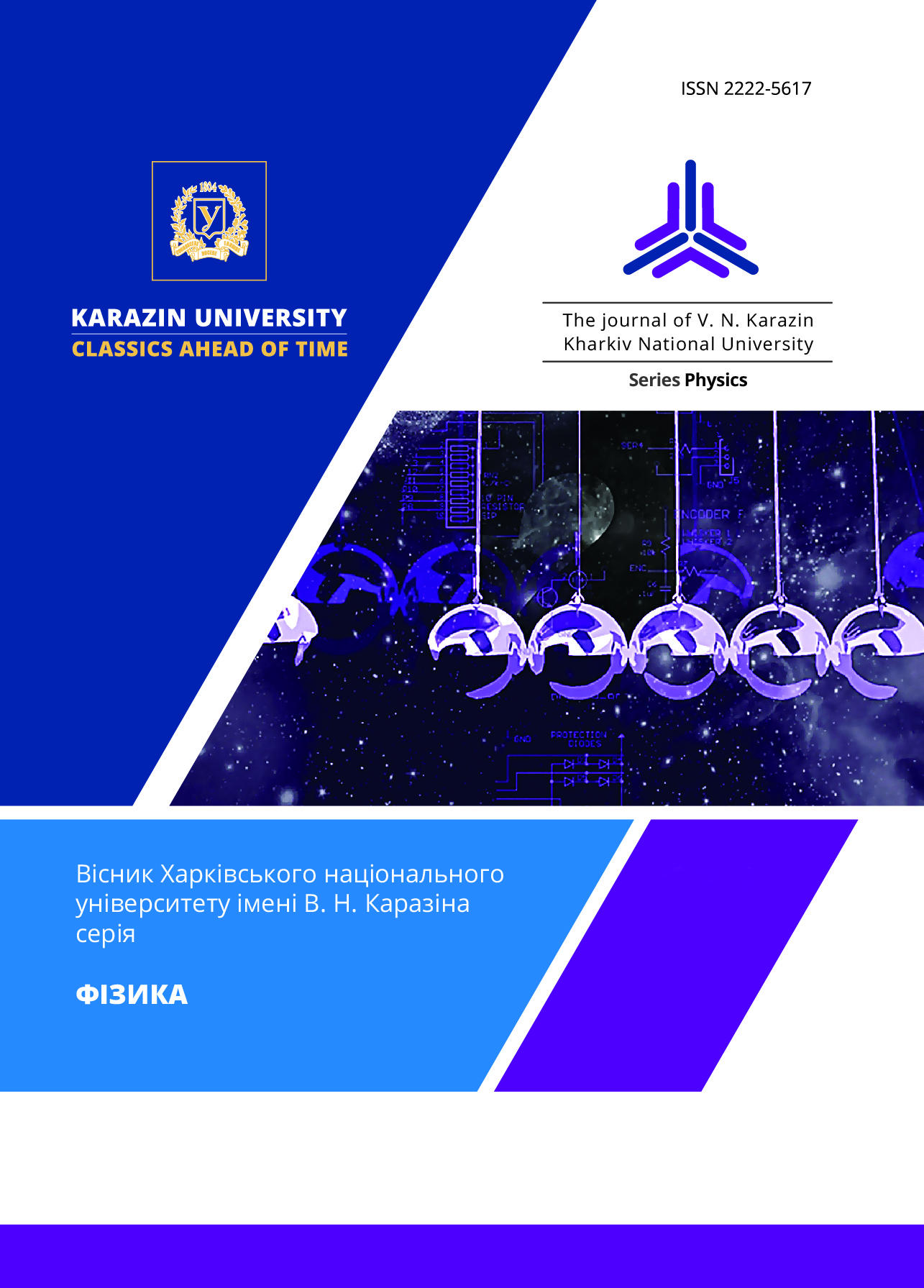Morphology of fibrous structures formed in the course of superplastic deformation of the 01420T alloy with the original bimodal grain structure
Abstract
The morphology of the fibrous structures formed in the working parts of the 01420T alloy samples with the initial bimodal grain structure, deformed to fracture under optimal conditions of superplastic deformation at a temperature Т = 520°С and flow stress σ = 4,5 MPa is investigated. The maximum elongation of specimens deformed to failure δ is 670%. It has been suggested that the specific type of fibrous structures found in the specimens of the investigated alloy 01420T probably depends on the volume of the metastable liquid-solid phase, which was concentrated in the form of inclusions at some grain boundaries and made a viscous flow during superplastic deformation, its shear viscosity , the characteristics of its surface tension, the degree of dynamic oxidation of the melt, and the kinetics of the development of this process. The final view of the fibers and their shape, likely, depends not only on the nature of the viscous flow of the liquid-solid material, but also on the process of its crystallization during the cooling of the specimen in air to room temperature after mechanical tests. It was found that in view, all fibrous structures found in the working parts of the specimens can be conditionally divided into the following: cylindrical fibers; tapered fibers; cylindrical fibers on which there is a thickening or one or more drop-like formations; ribbon-like fibers; fibers that look like stalactites or stalagmites. The reasons for the formation of cracks on ribbon-like fibers are considered. It is assumed that they were formed as a result of relaxation of internal stresses, which were not fully minimized in the course of recrystallization, which was carried out when the sample was cooled. The reasons for the formation of droplets on the fibers are considered. It has been suggested that fibrous structures similar to stalactites and stalagmites were formed from a viscous material, which, in the course of superplastic deformation, as a result of crystallization, occured in local microvolumes of fibers, gradually turned from liquid-solid to solid-liquid. This led to the fact that in the crystallized microvolume of this fiber, the viscous homogeneous flow of the material probably turned into a localized flow, which is characteristic of the plastic flow carried out as a result of displacement of dislocations in the solid phase, and leads to the formation of stalagmitic fibers.
Downloads
References
K.A. Padmanabhan, S. Balasivanandha Prabu, R.R. Mulyukov, Ayrat Nazarov, R.M. Imayev, S. Ghosh
Chowdhury. Superplasticity: Common Basis for a NearUbiquitous Phenomenon, Springer. Verlag, Berlin,
Heidelberg (2018), 526 p.
O.A. Kaibyshev. Superplasticity of industrial alloys, Metallurgy, Moscow (1978). 730p.
Xiao-guo Wang, Qiu-shu Li, Rui-rui Wu, Xiao-yuan Zhang, Liyun Ma. Advances in Materials Science and
Engineering, Article ID 7606140, 1 (2018). https://doi.org/10.1155/2018/7606140
I.N. Friedlander, K.V. Chuistov, A.L. Berezina, N.I. Kolobnev. Naukova Dumka, Kyiv. (1992). 192p.
V.N. Shcherba. Pressing of aluminum alloys, Intermet Engineering, M. (2001). 768p.
I.N. Fridlyander, V.S. Sandler. MiTOM, 8, 29 (1988).
I.N. Fridlyander, E.V. Ekhina, T.M. Kunyavskaya, V.L. Likin. MiTOM, 2, 62 (1985).
M.K. Rabinovich, M.V. Markushev, M.Y. Murashkin. Met. Sci. and Heat. Treatment, 39, №3-4, 172 (1997). https://doi.org/10.1007/BF02469074
I.I. Novikov, V.K. Portnoy, I.L. Konstantinov, N.I. Kolobnev, Metal Science of Aluminum Alloys, Nauka, Moscow, 84 (1985).
R.I. Kuznetsova, V.P. Poida, V.M. Andronov, V.V. Bryukhovetsky. Vestnick of Kharkiv State University. Series
“Physics”, V.2, No. 418, P.38 (1998).
V.P. Poyda, A.V. Poyda, V.V. Bryukho-vetsky, R.I. Kuznetsova, O.P. Kryshtal, O.L. Samsonik, D.Ye. Pedun,
Kafarani Ali Mahmud. Vestnick of Kharkiv State University. Series “Physics”, V.13, No.914, P.86 (2010).
V.P. Poyda, D.Ye. Milaya, A.V. Poyda, V.V. Bryukhovetskiy, R.V. Sukhov. Problems of atomic science and technology. Series “Physics of radiation damage and radiation materials
science”, No.4 (92), 139 (2014).
D.E. Milaya, V.P. Poyda, V.V. Bryukho-vetskiy, A.V. Poyda. // Vestnick of Kharkiv State University. Series “Physics”, V.29, 29 (2016).
D.E. Milaya, V.P. Poyda, V.V. Bryukho-vetskiy, A.V. Poyda. Metallofizika i noveyshiye tekhnologii, V.42, No. 4, 511 (2020). https://doi.org/10.15407/mfint.42.04.0511
S.A. Saltykov. Stereometric metallography, Metallurgy, M. (1976), 272p.
V.P. Poyda, V.V. Bryukhovetskiy, R.I. Kuznetsova, A.V. Poyda, V.F. Klepikov. Metallofizika i noveyshiye tekhnologii, V.25, №1, 117 (2003).
V.P. Poyda, V.V. Bryukhovetskiy, A.V. Poyda, R.I. Kuznetsova, V.F. Klepikov, D.L. Voronov. Fizika metallov
i metallovedeniye, V.103, №4, 433 (2007). https://doi.org/10.1134/S0031918X07040151
N.S. Gerchikova Fine structure and corrosion cracking of aluminum alloys, Metallurgy, M. (1982), 128p.
M.V. Maltsev, Yu.D. Chistyakov, M.I. Tsypin. DAN USSR, Vol.49, No.5, 813 (1954).
V.I. Dobatkin, R.M. Gabidullin, B.A. Kolachev, G.S. Makarov, Metallurgiya, M. (1976) 264p.
M.G. Zelin, S. Guillard Materials. Science and Technology, V.15, 309 (1999). https://doi.
org/10.1179/026708399101505734
C.L. Chen, M.J. Tan. Materials Science and Engineering, A298, 235 (2001). https://doi.org/10.1016/S0928-
(00)00193-4
C.L. Chen, M.J. Tan, Materials Science and Engineering,
A338, 243 (2002). https://doi.org/10.1016/S0921-5093(02)00083-7
M. Mabuchi, H.G. Jeong, K. Hiraga, K. Higashi, Interface Sci, V.4, №3, 4, 357 (1996). https://doi.org/10.1007/
BF00240254
M. Wang, H.Z. Guo, Y.J. Liu. Materials Science Forum, V.551-552, 645 (2007). https://doi.org/10.4028/www.
scientific.net/MSF.551-552.645
W.D. Cao X.P. Lu, H. Conrad. Acta Mater., Vol. 44, №2, 697 (1996). https://doi.org/10.1016/1359-6454(95)00176-X
Jung-Kuei Chang, Eric M. Taleff, Paul E. Krajewskib and James R. Ciulika. Scripta Materialia, 60, 459 (2009). https://doi.org/10.1016/j.scriptamat.2008.11.031








3.gif)
